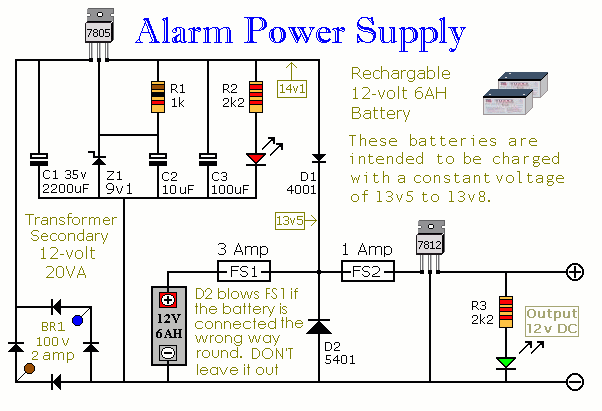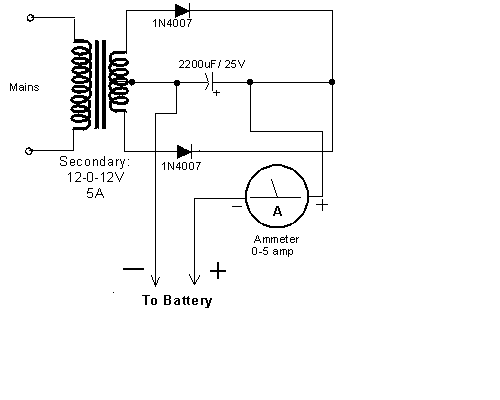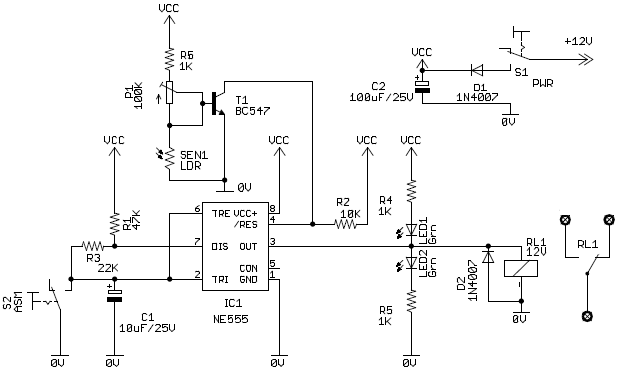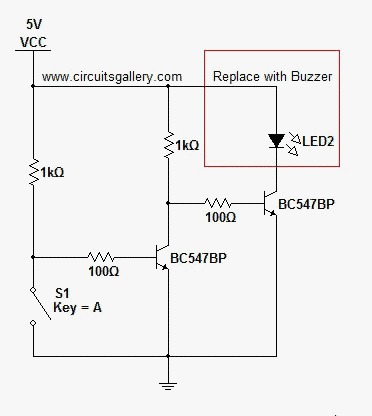
Car Alarm and Immobilizer
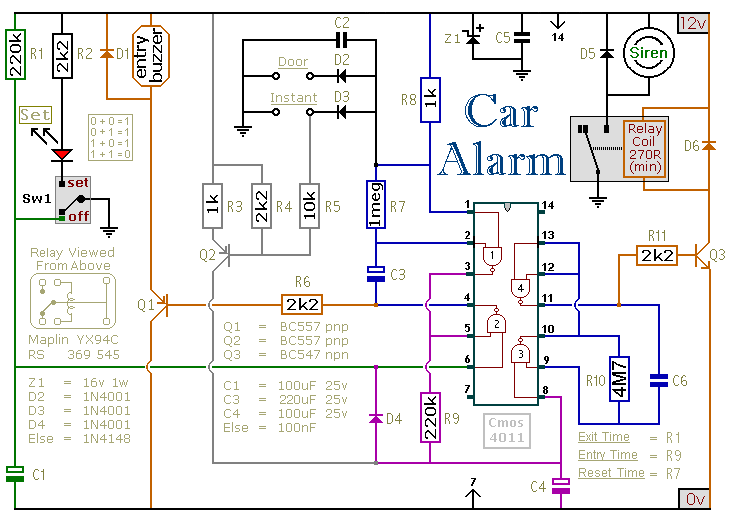
The alarm is set by opening Sw1. It can be any small 1-amp single-pole change-over switch - but for added security, you could use a key-switch. Once Sw1 is opened, you have about 10 to 15 seconds to get out of the vehicle and close the door behind you. When you return and open the door, the buzzer will sound. You have 10 to 15 seconds to move Sw1 to the "off" position. If you fail to do so, the siren will sound.
The alarm system described utilizes a single-pole change-over switch (Sw1) to initiate and deactivate an alert mechanism within a vehicle. The switch can be a standard 1-amp rated component, but a key-switch may be employed for enhanced security, preventing unauthorized access to the alarm system.
Upon activating the alarm by opening Sw1, a timer circuit is initiated, providing a grace period of 10 to 15 seconds for the user to exit the vehicle and secure the door. During this time, the system prepares to monitor for re-entry. If the user returns and opens the vehicle door during this monitoring phase, an audible alert is triggered via a buzzer. This serves as a warning to the user, indicating that the alarm is still active.
The functionality of the alarm hinges on the timely deactivation of Sw1. The user must return and switch off Sw1 within the specified grace period. Failure to do so results in the activation of a siren, which serves as a deterrent against potential intruders and alerts nearby individuals to the situation.
The circuit may include additional components such as a timer IC, a relay for controlling the siren, and a power supply capable of supporting the buzzer and siren operation. Proper design considerations should be made to ensure that the alarm system is reliable, with appropriate ratings for all components to handle the expected load during operation. The integration of a visual indicator, such as an LED, may also enhance user feedback regarding the system status (armed or disarmed).
Overall, this alarm system is a straightforward yet effective solution for enhancing vehicle security and can be customized further based on user preferences and requirements.The alarm is "set" by opening Sw1. It can be any small 1-amp single-pole change-over switch - but for added security you could use a key-switch. Once Sw1 is opened you have about 10 to 15 seconds to get out of the vehicle and close the door behind you.
When you return and open the door the buzzer will sound. You have 10 to 15 seconds to move Sw1 to the "off" position. If you fail to do so, the siren will sound. 🔗 External reference
The alarm system described utilizes a single-pole change-over switch (Sw1) to initiate and deactivate an alert mechanism within a vehicle. The switch can be a standard 1-amp rated component, but a key-switch may be employed for enhanced security, preventing unauthorized access to the alarm system.
Upon activating the alarm by opening Sw1, a timer circuit is initiated, providing a grace period of 10 to 15 seconds for the user to exit the vehicle and secure the door. During this time, the system prepares to monitor for re-entry. If the user returns and opens the vehicle door during this monitoring phase, an audible alert is triggered via a buzzer. This serves as a warning to the user, indicating that the alarm is still active.
The functionality of the alarm hinges on the timely deactivation of Sw1. The user must return and switch off Sw1 within the specified grace period. Failure to do so results in the activation of a siren, which serves as a deterrent against potential intruders and alerts nearby individuals to the situation.
The circuit may include additional components such as a timer IC, a relay for controlling the siren, and a power supply capable of supporting the buzzer and siren operation. Proper design considerations should be made to ensure that the alarm system is reliable, with appropriate ratings for all components to handle the expected load during operation. The integration of a visual indicator, such as an LED, may also enhance user feedback regarding the system status (armed or disarmed).
Overall, this alarm system is a straightforward yet effective solution for enhancing vehicle security and can be customized further based on user preferences and requirements.The alarm is "set" by opening Sw1. It can be any small 1-amp single-pole change-over switch - but for added security you could use a key-switch. Once Sw1 is opened you have about 10 to 15 seconds to get out of the vehicle and close the door behind you.
When you return and open the door the buzzer will sound. You have 10 to 15 seconds to move Sw1 to the "off" position. If you fail to do so, the siren will sound. 🔗 External reference
